Brewing coffee is an art form, and there are many ways to do it. But what’s the difference between drip coffee vs espresso? The answer lies in the roast, grind, water temperature, and pressure. Keep reading to learn more.
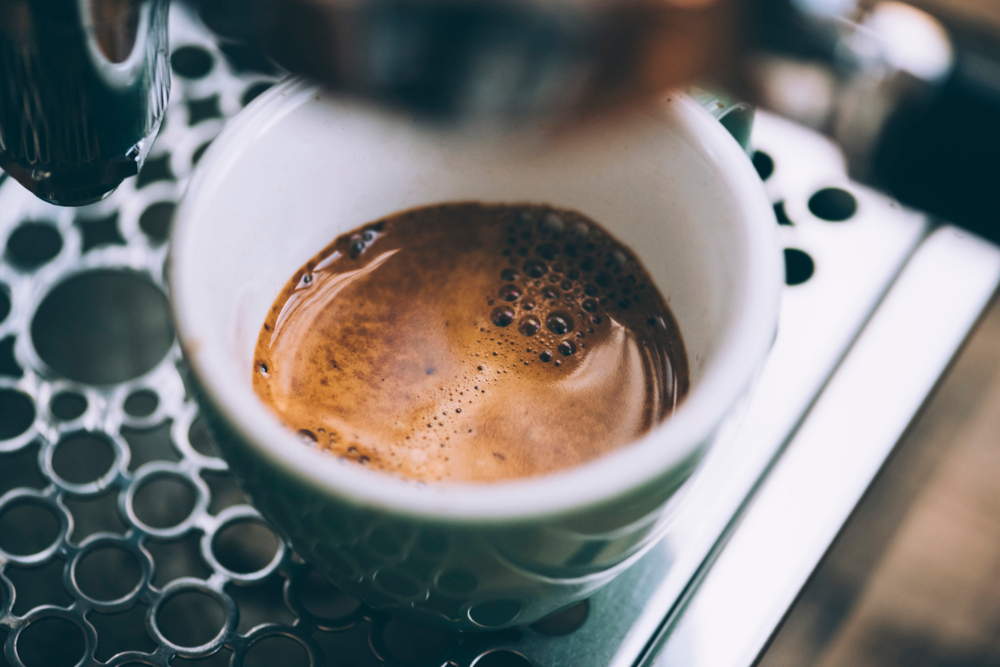
Table of Contents
If you’re looking for a rich and full-bodied cup of coffee, then espresso is the way to go. However, if you’re looking for something light and refreshing, drip coffee might be a better choice.
That’s the sum of it, but you need to understand more about the two coffee brewing types to figure out which one is better for you.
| Drip-Brewed Coffee | Espresso | |
|---|---|---|
| Texture | Watery, but can be made silkier with milk | Creamy due to the milk foam |
| Caffeine | Less caffeine per ounce, but a bigger serving size | More caffeine per ounce, but a smaller serving size |
| Flavor quality | Mostly depends on the brewing machine | Flavorful and rich |
| Brewing control | Heated water | Steam or pressure |
| Brewing time | Can make a cup of regular coffee in about 3-5 minutes | Can make a single shot of espresso in 20-30 seconds |
| Required supplies | Coffee machine, paper filter, ground coffee, and water | Espresso machine, espresso beans, a coffee grinder, filtered water, and a tamper |
| Ease of use | Very beginner-friendly | Requires some coffee-making experience |
| Price | A machine can cost as low as $20 | A good machine can cost $500 or more |
Drip Coffee vs Espresso – Getting to Know Them
Before discussing the differences between drip coffee vs espresso, it’s essential to understand the brewing method behind each type.
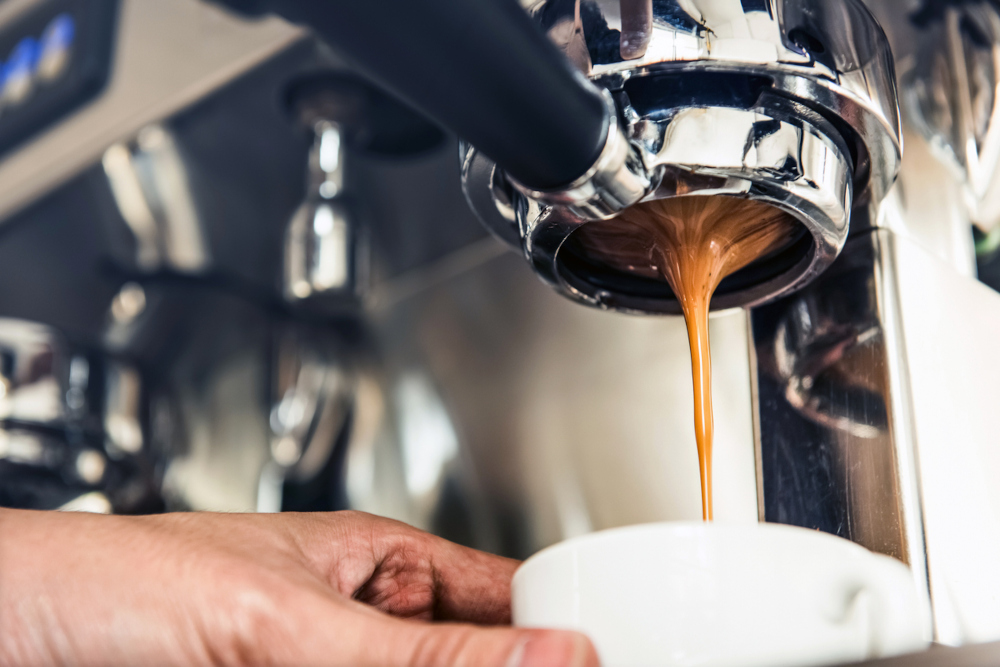
What Is Espresso?
Espresso is made by forcing pressurized hot water through tightly packed coffee grounds, creating a rich, full-bodied brew with a layer of crema on the surface.
It’s typically served in a small cup and often used as a base for drinks such as lattes and cappuccinos.
What Is Drip Coffee?
Drip coffee is made by pouring hot water over coffee grounds placed in a filter, resulting in a brewed cup of coffee.
This type of coffee is typically less strong than espresso but has more caffeine per serving. It can be served black or with milk and sugar added.
Espresso vs Drip Coffee – Key Differences
Now that we know a little more about drip coffee vs espresso, let’s take a look at the differences between the two:
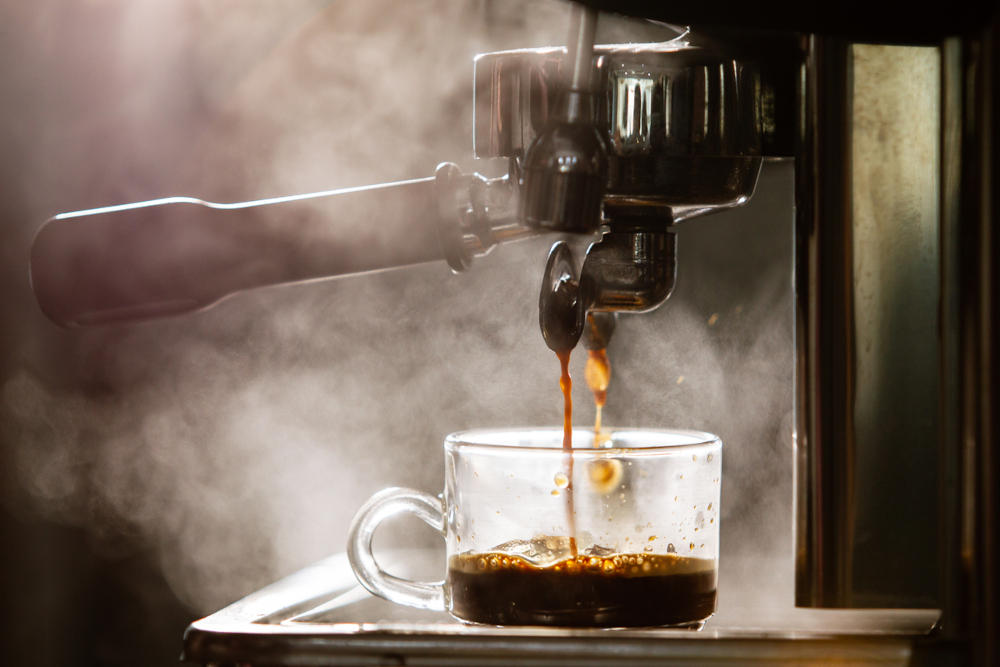
Flavor Quality
The biggest difference between drip coffee vs espresso is the flavor quality.
Thanks to the pressurized brewing method, espresso has a richer, fuller flavor than drip coffee. Drip coffee can sometimes taste a bit watered down in comparison. You might also be interested in discovering the differences between Americano and drip coffee.
Texture
Espresso is also known for its creamy texture due to the crema that forms on top of the coffee. This thick foam layer helps to lock in the espresso’s flavor and aroma.
Caffeine
It all depends on how you measure it. Pound for pound and espresso has far more caffeine than a regular drip coffee, but let’s not forget that espresso is served in a 2 or 3-ounce cup. In contrast, an ideal drip coffee mug is 8 ounces or more.
Thus, espresso is better if you want a sudden energy surge. Still, if you want more overall caffeine, regular coffee takes the cake.
On the other hand, the speed with which you drink the beverage can also impact how the caffeine is absorbed into the bloodstream (have you ever tried drinking an entire cup of coffee in a single gulp?).
Many people look for strong coffee to kickstart their mornings. You should look over the drip and percolator coffee differences if you’re one of them.
Brew Time
Brewing espresso takes significantly less time than drip coffee – about 20-30 seconds as opposed to the 5-10 minutes needed to make a cup of drip coffee.
Brewing Control
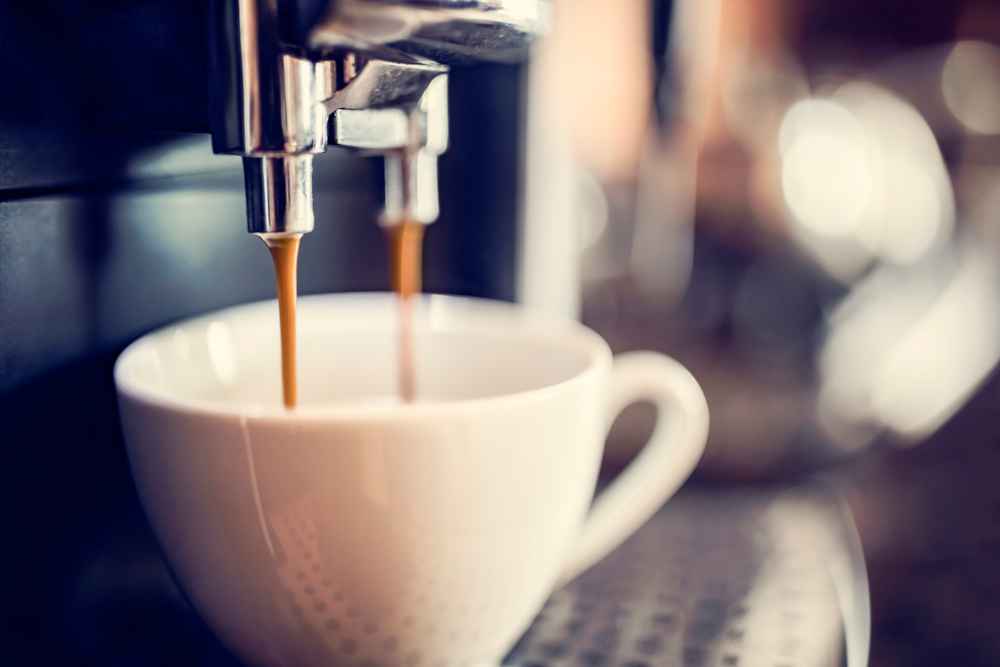
As far as brewing controls are concerned, both expresso and drip machines are equally matched. Espresso machines use steam or pressure to force the hot water through the coffee grounds. In contrast, drip coffee makers simply use heated water.
Required Supplies
To make a cup of espresso, you’ll need an espresso machine, filtered water, and some espresso beans. To make drip coffee, you’ll just need a coffee pot, filter, and coffee grounds.
Ease of Use
Drip coffee machines are typically easier to use than espresso machines, requiring more skill and practice to operate properly.
For example, espresso machines require tamping the coffee grounds into the portafilter and then using a machine to apply pressure and heat to produce a cup of espresso.
On the other hand, a drip coffee maker only requires that you add the water, the filter, and the ground coffee before pressing a button.
Price
The price of an espresso machine is probably the biggest obstacle for most people, as they can be quite expensive. Drip coffee makers are more affordable and can often be found for less than $50.
Here are some examples of the best drip coffee makers:
- Mr. Coffee 12-Cup Coffee Maker – The best budget-friendly choice
- Hamilton Beach 49980A Coffee Maker – The best mid-range choice
- Cuisinart DCC-3200BKSP1 Coffee Maker – The best premium choice
On the other hand, espresso machines can go for as much as $500 or more. The low-end ones are just not worth the investment, and that’s why most people prefer drinking their daily cup of espresso at the local coffee shop.
Here are some examples of popular espresso machines:
- DeLonghi EC155 Espresso Machine – The best budget-friendly choice
- Mr. Coffee Espresso and Cappuccino Maker – The best mid-range choice
- Breville BES870XL Barista Express Espresso Machine – The best premium choice
The Pros of Espresso Coffee
Coffee enthusiasts can agree that espressos are an acquired taste. The intense aroma, along with the almost artisanal crafting method, can be a real turn-off for casual consumers (unless someone else is making it for them).
As such, this brewing method is perfect for people who:
- Need a cup of coffee brewed fast and efficiently
- Love drinks with a finer taste and a creamier texture
- Can afford to buy a more expensive type of coffee maker
- Prefer a stronger and more flavorful drink instead of a watered-down brew
- Prefer drinking their coffee in one gulp instead of sipping on it for 20 minutes
The Pros of Drip Coffee
Overall, drip coffee is popular because of how easy it is to make and because the resulting coffee can be further customized to your taste with various additions (e.g., milk or cream).
Because of this, it’s the perfect brewing method for people who:
- Drink coffee out of convenience
- Drink several cups of coffee a day
- Don’t like coffees that are too strong or bitter
- Want to invest in a very affordable coffee maker
- Don’t have the time to brew their coffee using more traditional methods
How to Make Espresso in 6 Easy Steps
We already mentioned that making a shot of espresso can be a bit more difficult than brewing a pot of drip coffee. Because of that, we thought it would be helpful to provide some instructions on making espresso.
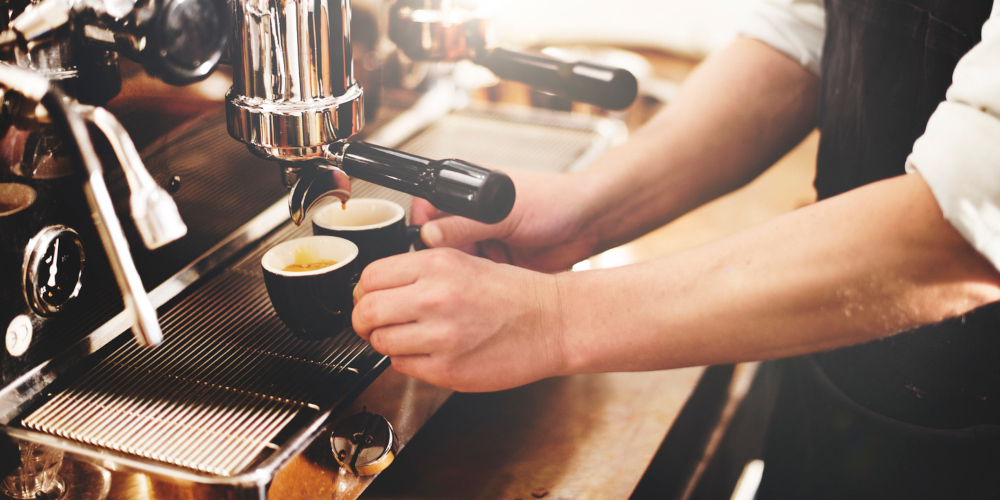
- Gather the required supplies:
- Espresso machine
- Espresso beans
- Coffee grinder
- Filtered water
- Tamper
- Fill the water tank of your espresso machine with filtered water.
- Add the espresso beans to the grinder and grind them into a fine powder.
- Tightly pack the ground espresso beans into the portafilter.
- Apply pressure to the portafilter and use the machine to brew a shot of espresso.
- Serve the espresso in a demitasse cup and enjoy!
Sure enough, not everyone can afford a professional espresso machine. Still, with a bit of skill, patience, and imagination, you can make a cup of espresso without having the machine.
Drip Coffee vs Espresso (FAQ)
While we went ahead and talked about the most important aspects of drip coffee vs espresso, there are still some things that we need to clear up.
What is the difference between drip and espresso?
Espresso is made by forcing pressurized hot water through finely-ground coffee beans. In contrast, regular coffee is brewed by simply pouring hot water over coffee grounds.
Which is better, espresso or drip coffee?
There’s no easy answer to that question, as it depends on personal preferences. However, espresso is generally considered to be more flavorful than drip coffee.
What tastes better, espresso or coffee?
When it comes to flavor, espresso is the clear winner. However, drip coffee can be more customizable. You can add milk, creamers, and sweeteners to make it taste however you like.
Why does espresso taste better than drip coffee?
The intense flavor of espresso comes from the fact that it’s made with finely-ground coffee beans compressed under high pressure. Espresso is often brewed with a dark roast coffee bean, which also contributes to its unique flavor.
Why do people prefer espresso over coffee?
One of the reasons why espresso is often preferred over regular coffee is its intense flavor. Espresso also has a thicker consistency than drip coffee, and it’s less acidic, which makes it more palatable for some people.
Is drip coffee the same as pour over?
Although drip coffee and pour over involve similar brewing methods, they yield different results.
Drip Coffee vs Espresso – Conclusion
So which is better, espresso or drip coffee?
Like we said before, it really depends on personal preferences. But here’s a brief rundown of what you should choose, depending on what your priorities are:
Choose espresso if you like to:
- Drink coffee with an intense flavor
- Make a cup of coffee in less than a minute
- Enjoy coffee with a very delicate and creamy texture
Pick drip-brewed coffee if you like to:
- Customize your drinks to suit your tastes
- Make coffee without spending a lot of money
- Drink coffee that’s easy to make
We hope this article has helped clarify some of the differences between drip coffee vs espresso. You might also be interested in the differences between drip coffee and French press coffee.
Until next time, happy brewing!
Leave a Reply